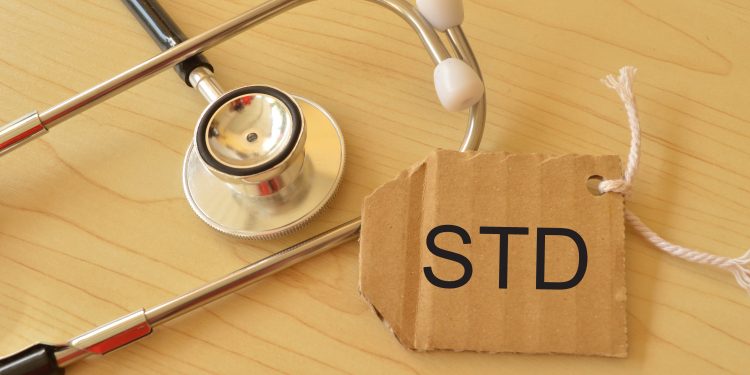Sexually Transmitted Diseases is a diseases triggered by an infection, which occurs when bacteria, viruses, or parasites invade the body. While an infection might not have any symptoms, a disease will always have clear symptoms.
Sexually Transmitted Diseases (STDs) do start out as sexually transmitted infections (STIs). However, not all sexually transmitted infections progress to become sexually transmitted diseases.
STDs are infections that are carried from individual to individual through sexual contact. The World Health Organization (WHO) reports that more than one million people worldwide contract sexually transmitted illnesses each day.
How to contract the sexually transmitted disease
STDs are primarily transmitted through sexual contact via:
- Vaginal,
- Anal, and
- Oral sex.
Symptoms of Sexually Transmitted Diseases (STDs)
If an STD starts with merely a symptom of an STI, you might experience:
- Pain or discomfort while sexually active or urinating
- Blisters, lumps, or rashes around or on the vagina, penis, testicles, anus, buttocks, thighs, or mouth
- Unusual discharge or bleeding from the pubic areas
- Itching in the vaginal area or around it.
- Irregular periods or bleeding after sexual activity
Note that not all STIs show symptoms.
Other signs and symptoms may differ depending on the STD. They may include the following:
- Fever
- Recurrent ache
- Exhaustion
- Memory loss
- Abnormalities in eyesight or hearing
- Nausea
- Weight loss
- Lumps or swellings
Sexually Transmitted Diseases and Their Causes
Sexually transmitted infections cause all sexually transmitted diseases.
These illnesses are typically transmitted by sexual contact, including bodily fluids or skin contact during vaginal, oral, and anal intercourse.
Others of them never get diseases, especially if treated, and some even go away on their own.
However, if the microorganisms that caused the infection to wind up harming cells in the body and altering its processes, an STI will advance to an STD.
Types of Sexually Transmitted Diseases
Below are the main sexually transmitted diseases to be aware of.
-
Pelvic inflammatory disease
If left untreated, gonorrhea, chlamydia, and trichomoniasis are prevalent STIs that can develop into PID.
However, not all cases of PID are caused by an STI; other bacterial diseases might also be involved.
Despite the fact that this disease of the female reproductive organs is recognized as a disease, some persons have no symptoms.
- Pelvic or lower stomach pain
- Pain during penetrative vaginal sex or when peeing
- Irregular, heavy, or painful vaginal bleeding
- Odd vaginal discharge
- Nausea
- Elevated temperature
Antibiotics can successfully cure PID if it is discovered early enough. They would not, moreover, heal any fallopian tube bruising that has occurred.
This scarring has been linked to an increase in the likelihood of an ectopic pregnancy.
-
Secondary syphilis
Syphilis, a very uncommon condition, is considered a sexually transmitted infection in its initial stages.
The illness begins with one or more little round lesions on the genital area, anus, or mouth.
This disease can have major effects on the body’s organ systems, resulting in:
- Loss of eyesight
- Loss of hearing
- Memory loss
- Mental health disorders
- Diseases of the brain or spinal cord
- Heart diseases.
The earlier syphilis is diagnosed and treated, the less damage it would result in.
-
Cancer
While some varieties of the human papillomavirus, or HPV, may not cause disease, others can cause unwanted cell modifications.
This can result in cancer, such as:
- Oral cancer
- Cervical cancer
- Vulvar cancer
- Penile cancer
- Anal cancer
HPV is responsible for nearly all cervical cancers, as well as more than 90% of anal cancers, 75% of vaginal cancers, and more than 60% of penile cancers.
The symptoms of malignancies may differ depending on the particular spot where they affect the body. Swellings and tumors, as well as bleeding and pain, are common.
Cancer is frequently easier to cure if detected early, using chemo, radiotherapy, or surgery.
There are certain screening tests available to detect precancerous cell alterations caused by HPV.
-
Genital warts
Certain lower-risk forms of HPV may produce genital warts.
These skin-colored or white lumps appear on the genitals and affect about 400,000 people each year.
They can be treated or managed but not completely cured because the virus that causes them may still be present. In certain circumstances, HPV simply vanishes.
Genital warts can also disappear on their own, although they can also reappear. You can get rid of them by freezing or scorching them off, or by applying a synthetic cream or liquid.
-
AIDS
HIV, or human immunodeficiency virus, can harm the immune function and increase the likelihood of getting other viruses or germs, as well as developing some cancers.
However, if not treated, the virus can progress to AIDS, which makes the body prone to dangerous infections and illnesses. AIDS patients may experience:
- Fast weight loss
- Intense fatigue
- Ulcers
- Infections
- Neurological diseases
- Malignancies
There is no cure for AIDS. Life expectancy without therapy is roughly 3 years because of the range of diseases that might be acquired as a result of a seriously impaired immune system.
Pregnancy and Sexually Transmitted Illnesses
Some sexually transmitted diseases can be passed on to a fetus or a newborn during pregnancy or childbirth. Of course, this is not true for all sexually transmitted diseases.
Syphilis can be transmitted to an unborn child, resulting in severe infection, miscarriage, or stillbirth.
Genital warts can potentially be passed on to a child, but this is extremely unusual.
PID can have an impact on future pregnancies, increasing the likelihood of ectopic pregnancy and causing infertility in about 1 in 10 persons.
Below are other things to consider if you’re pregnant:
- Get tested for STIs, such as HIV, to prevent problems and ensure that any infection is diagnosed and treated.
- If you have an STD, consult your health professional. They may need to double-check that a drug is safe for them to use or postpone therapy if necessary.
- Keep in mind that a cesarean section may be required, especially if genital warts cause the stretching of the vagina hard.
Diagnosis of Sexually Transmitted Diseases
It is difficult for healthcare experts to diagnose an STD based solely on symptoms, so they will need to perform some tests and examinations.
Based on the presumed STD, this may include the following:
- Body fluid swabs
- Blood testing
- Specialized treatments such as surgical intervention or a laparoscopy.
Some optional treatments for Sexually Transmitted Diseases
Depending on the illness, there are numerous treatment options available, including:
- Antibiotics
- Additional oral or topical medicines,
- Surgery
- Radiation
You may also be encouraged to consider some lifestyle changes, like abstaining from sex until your therapy is over.
Remember that for most STDs, it is not easy to reverse any harm caused by the condition. Again, some STDs, like AIDS, are incurable.
Prevention of Sexually Transmitted Diseases
Preventing sexually transmitted infections is the best method to avoid STDs. And the only proven method is to abstain from sexual interaction.
There are, however, measures to make the whole thing safer and lower the risk of developing an STI:
- Before participating in any sexual activity with a new partner, have an honest discussion about your sexual past and decide what you’re both comfortable with.
- Get tested for STIs on a regular basis, particularly if you have new or several partners. Request that any partners do the same.
- Properly use a condom during vaginal, anal, and oral intercourse to help prevent STIs spread by fluids.
- Think about being vaccinated against HPV and hepatitis B.
- If you think you are at a higher risk for contracting HIV, think about taking pre-exposure prophylaxis medication every day.
Psychological Effects of Sexually Transmitted Diseases
Chlamydia trachomatis is the only sexually transmitted infection that has been linked to depression.
Sexually transmitted diseases have been nicknamed “social diseases,” pointing to social factors as the main components of disease risk and case distribution in illnesses concerning human sexual behavior.
Sexually transmitted illnesses impose a significant psychological and social impact. Individuals with STDs reported feelings of:
- Humiliation,
- Worry,
- Embarrassment,
- Depression,
- Fear of rejection, and
- Fear of not being sexually appealing.
When people are blamed or condemned for having an STD, this is referred to as stigma. Other forms of infections and illnesses may also carry a stigma.
However, due to societal views about sex being ‘dirty’ or even shameful, it may be worse for STDs.
Conclusion
Although many sexually transmitted diseases are treatable, not all are curable. Some are extremely dangerous, whereas others have less dire consequences. They are, nevertheless, all the result of an STI.
So, the best way to avoid them is to get checked on a regular basis and adopt safer sex. If you’re diagnosed with any STI, you should seek prompt treatment as soon as possible.









Discussion about this post